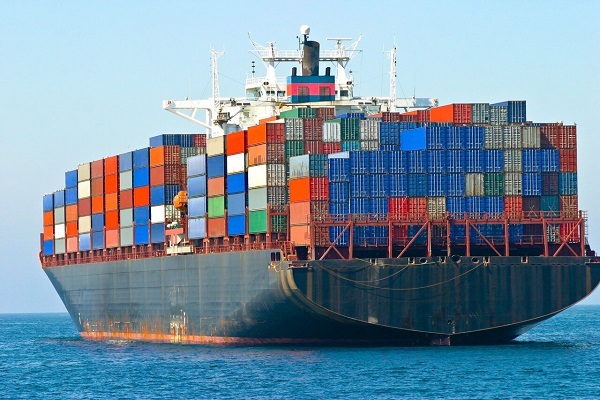
TABNAK, Oct, 29: The two sides have set US$5 billion dollars for annual mutual trade, however, lack of shipping line between the two countries has made Oman follow the UAE in terms of trade volume with Iran.
“In addition to obstacles of sanctions, we have yet to launch a regular shipping line between Iran and Oman. Despite the negotiations, it has not come true due to the lack of financial resources,” he said.
Trade between Iran and Oman is growing and the growth is still ongoing in the first half of this year, Razeqi said.
On October 5, Iran’s Trade Promotion Organization (TPO) announced the country’s export to Oman increased by 35 percent in the first five months of the current Iranian calendar year (March 20-August 21), as compared to the same period of time in the past year.
Abdol-Amir Rabihavi, the director-general of the TPO’s West Asia Office, referred to the significance of Iran’s economic cooperation expansion and said that on the sidelines of the 20th meeting of Iran-Oman Joint Economic Committee last year, it was decided that the issue of preferential trade between the two countries would be put on the agenda of Iran’s deputy minister of industry, mining and trade and Oman’s deputy minister of commerce, industry and investment promotion.
As previously reported by the Islamic Republic of Iran Customs Administration (IRICA), Oman was the sixth top trade partner of Iran among the Islamic Republic’s neighbors in the first five months of the present year.
In early July, the former Head of Iran's Trade Promotion Organization (TPO) Mehdi Zeighami met the director of trade, industry, and investment development from the Sultanate of Oman to discuss areas of joint investment, industrial matters, and financial affairs between the two countries.
Zeighami said at the time that the first round of the talks to establish a Preferential Trade Agreement (PTA) between Iran and the Sultanate of Oman was held in Muscat.
The trade and economic relations between the two countries have been consistently improving in recent years, he said, adding that the conclusion of the Preferential Trade Agreement and the establishment of close trade and economic relations in all fields are of paramount importance.
He characterized the trade volume between the two countries in the last Iranian calendar year (ending March 19, 2024) as "unprecedented".
Iran shares land or water borders with 15 countries namely UAE, Afghanistan, Armenia, Azerbaijan, Bahrain, Iraq, Kuwait, Kazakhstan, Oman, Pakistan, Qatar, Russia, Turkey, Turkmenistan, and Saudi Arabia.
Expanding trade with the neighboring countries is one of the major plans that the Iranian government has been pursuing in recent years.
In December 2023, the former Iranian Industry, Mining and Trade Minister Abbas Ali-Abadi said the value of trade between Iran and Oman is targeted to become $5 billion.
Saying that signing a preferential trade agreement with Oman is being followed up, the minister said: “Our trade with Oman is targeted to be $3.5 billion first and then $5 billion.”
Iran and Oman have signed two memorandums of understanding (MOU) to boost bilateral cooperation and emphasize the importance of using their national currencies in mutual trade instead of the dollar.
The mentioned MOUs were signed during the two countries’ 20th Joint Economic Committee meeting in Tehran on December 6, 2023.
One of the MOUs was signed by Ali-Abadi, and Oman’s Minister of Commerce, Industry and Investment Promotion Qais Mohammed Al Yousef on supporting joint investment by the two sides.
Iran’s Ministry of Industry and Oman’s Chamber of Commerce also signed an MOU to boost cooperation in technology as well.
The two sides have also exchanged views on ways of expanding cooperation in the field of fishery and agriculture, deciding to hold a joint fishery exhibition soon.
During the joint committee meeting, Ali-Abadi announced Iran’s readiness to jointly implement key industrial projects with Oman including the construction of an industrial park, the establishment of power plants as well and cooperation in maritime transport projects among others.
The Omani minister on his part emphasized the importance of boosting economic and trade relations between Tehran and Muscat.
During his stay in Tehran, Mohammed Al Yousef also met with the Head of the Central Bank of Iran (CBI) Mohammad-Reza Farzin, and stressed the importance of using Iranian and Omani national currencies in mutual trade.
The Omani official said his country wants to have a strong presence in establishing the required infrastructure for banking and monetary transactions in Iran, implementing joint projects, as well as making investments in industrial and mineral projects. Omani investors are also keen to participate in energy projects and to develop Iran’s gas fields, he added.
The top Iranian banker also said that his country welcomes any measure that helps boost monetary and banking cooperation between the two countries.
Farzin stressed the importance of using national currencies by the two countries in their mutual trade instead of the dollar as well.